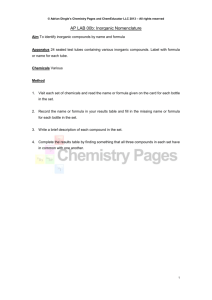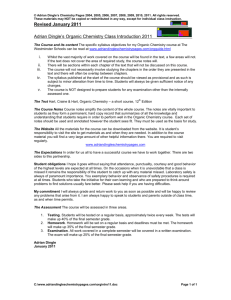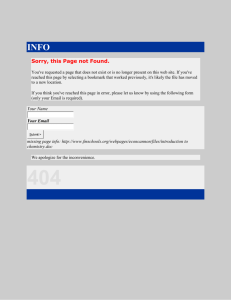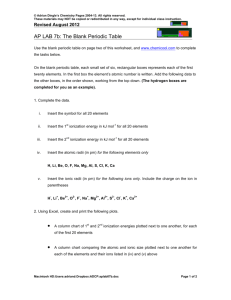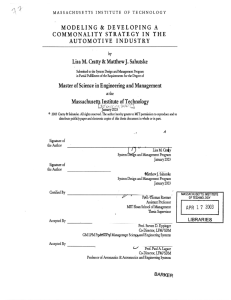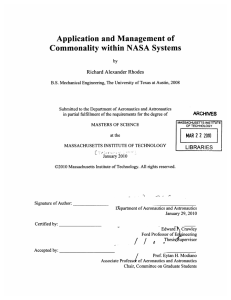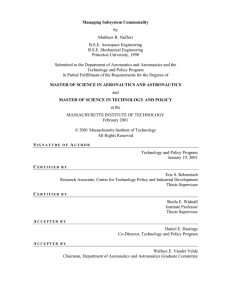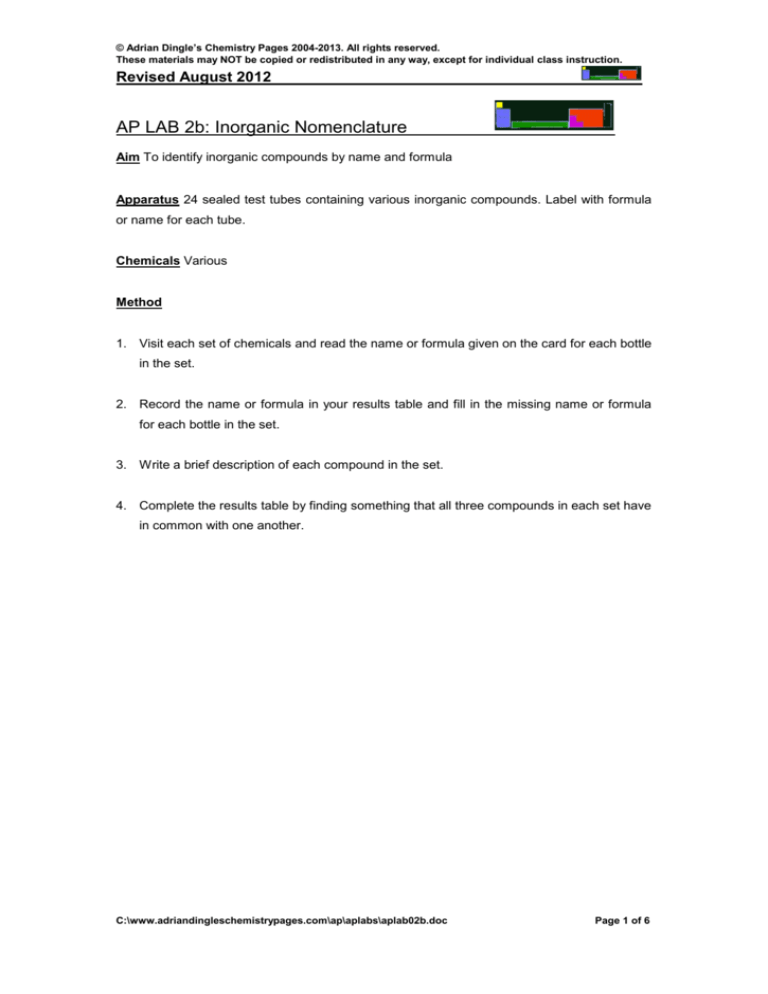
© Adrian Dingle’s Chemistry Pages 2004-2013. All rights reserved.
These materials may NOT be copied or redistributed in any way, except for individual class instruction.
Revised August 2012
AP LAB 2b: Inorganic Nomenclature
Aim To identify inorganic compounds by name and formula
Apparatus 24 sealed test tubes containing various inorganic compounds. Label with formula
or name for each tube.
Chemicals Various
Method
1. Visit each set of chemicals and read the name or formula given on the card for each bottle
in the set.
2. Record the name or formula in your results table and fill in the missing name or formula
for each bottle in the set.
3. Write a brief description of each compound in the set.
4. Complete the results table by finding something that all three compounds in each set have
in common with one another.
C:\www.adriandingleschemistrypages.com\ap\aplabs\aplab02b.doc
Page 1 of 6
© Adrian Dingle’s Chemistry Pages 2004-2013. All rights reserved.
These materials may NOT be copied or redistributed in any way, except for individual class instruction.
Revised August 2012
Results
SET A
NAME
FORMULA
DESCRIPTION
1.
2.
3.
Commonality
SET B
NAME
FORMULA
DESCRIPTION
1.
2.
3.
Commonality
C:\www.adriandingleschemistrypages.com\ap\aplabs\aplab02b.doc
Page 2 of 6
© Adrian Dingle’s Chemistry Pages 2004-2013. All rights reserved.
These materials may NOT be copied or redistributed in any way, except for individual class instruction.
Revised August 2012
SET C
NAME
FORMULA
DESCRIPTION
1.
2.
3.
Commonality
SET D
NAME
FORMULA
DESCRIPTION
1.
2.
3.
Commonality
C:\www.adriandingleschemistrypages.com\ap\aplabs\aplab02b.doc
Page 3 of 6
© Adrian Dingle’s Chemistry Pages 2004-2013. All rights reserved.
These materials may NOT be copied or redistributed in any way, except for individual class instruction.
Revised August 2012
SET E
NAME
FORMULA
DESCRIPTION
1.
2.
3.
Commonality
SET F
NAME
FORMULA
DESCRIPTION
1.
2.
3.
Commonality
C:\www.adriandingleschemistrypages.com\ap\aplabs\aplab02b.doc
Page 4 of 6
© Adrian Dingle’s Chemistry Pages 2004-2013. All rights reserved.
These materials may NOT be copied or redistributed in any way, except for individual class instruction.
Revised August 2012
SET G
NAME
FORMULA
DESCRIPTION
1.
2.
3.
Commonality
SET H
NAME
FORMULA
DESCRIPTION
1.
2.
3.
Commonality
C:\www.adriandingleschemistrypages.com\ap\aplabs\aplab02b.doc
Page 5 of 6
© Adrian Dingle’s Chemistry Pages 2004-2013. All rights reserved.
These materials may NOT be copied or redistributed in any way, except for individual class instruction.
Revised August 2012
Conclusion/Calculation
1. Describe a feature that all ionic compounds have in common.
2. Ionic compounds are usually formed between which types of elements?
3. Complete the table below.
GROUP
1
2
13
15
16
17
CHARGES
ON IONS
4. What type of elements exhibit the tendancy to form metal ions of more than one positive
charge? How are these different charges denoted when naming compounds?
C:\www.adriandingleschemistrypages.com\ap\aplabs\aplab02b.doc
Page 6 of 6


